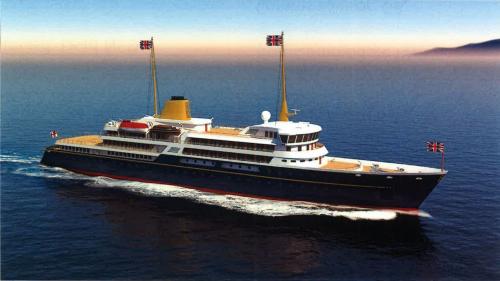In the early 1980s, in a letter published in the pages of The Naval Architect, Margaret Thatcher referred to shipbuilding in the UK as a sunset industry. At the time it was very difficult to dispute that; attempts to revitalise the fortunes of yards under the auspices of the public corporation British Shipbuilders were quickly unravelling. By the end of the decade those yards that hadn’t closed completely were sold into private ownership and there was a reluctant acceptance, if not satisfaction, that British maritime was entering a post-industrial epoch.
Forty years on, the rhetoric of Boris Johnson couldn’t be more different as he told an assembly of British maritime leaders in Whitehall about the government’s plans to ‘bring shipbuilding home’ at the launch of the National Shipbuilding Strategy (NSbS) in March; a £4 billion Government procurement programme for the next 30 years.
Officially, the whitepaper is billed as a ‘refresh’ of the 2017 strategy, but while remaining broadly under the purview of the Ministry of Defence (MoD) and retaining a strong focus on naval shipbuilding, the revised strategy is notable for giving significantly more attention to commercial shipbuilding and a closer collaboration with industry than its earlier incarnation. Moreover, the Prime Minister himself has made no secret of his desire to make the UK a green shipbuilding superpower.
Among the plans announced were a shipbuilding pipeline for more than 150 naval and civil vessels (including the much-publicised National Flagship, steel cutting for which is due to take place at the end of this year); a further government office for tackling shipping emissions (UK SHORE) with £206 million of funding, and a new UK Shipbuilding Skills Taskforce to address skills gaps. The government’s own procurements are seen as providing a baseline level of security to promote industry investment in R&D, people and facilities, particularly with regard to the emerging markets created by green shipping.
Expanded scope
The 2017 iteration of the strategy was heavily informed by a report by industrialist (and former RINA president) Sir John Parker. Those recommendations also included the formation of a new Industry-led Maritime Enterprise Working Group (MEWG) that would bring together industry, government and academia in addressing recommendations which fell outside the Navy’s remit.
“An early realisation was that the NSbS was too limited in its scope as it was only considering naval warships. There were brief references to the civil side, but they were very brief,” explains Peter French, former chief executive of BMT Group (also a past RINA president), who chaired the MEWG between 2017 and 2022.
“One of the first things we undertook was a market evaluation and competitiveness study to identify sectors of the shipbuilding market, both naval and commercial, in which the UK capability is likely to be most competitive. The study provided an indication of the type of vessels that we were best suited to build, the areas of the market we should look into and the gaps in our competitiveness that would need to be addressed.”
The MEWG would go on to make a series of recommendations to the government’s Shipbuilding Tsar (the Secretary of State for Defence), which in turn led to MoD funding for a so-called Rich Picture exercise led by the MEWG, in effect a series of iterative workshops with industry stakeholders that coalesced into a shared vision for British maritime. This work in turn served as the basis for the refreshed NSbS.
French points to the creation of the National Shipbuilding Office (NSO), formally launched separately late last year, as a key demonstrator of the government’s commitment to the strategy. Although housed within the MoD and reportable to the Shipbuilding Tsar, the NSO will eventually comprise 30 staff from an array of Governmental departments with an interest in shipbuilding.
In addition to the NSO, a new Maritime Capability Campaign Office (MCCO), accountable to the Department of Trade, will be tasked with targeting an estimated £600 million of expert opportunities over the next five years. A further body, the Shipbuilding Enterprise for Growth (SEG) has replaced the MEWG, but with a similar remit to engage closely with the industry and academia.
For more please see the April edition of The Naval Architect.




